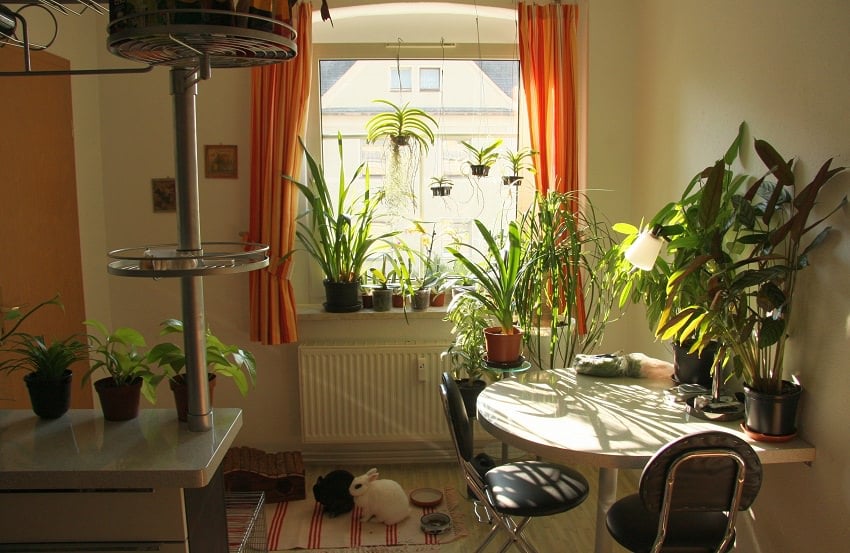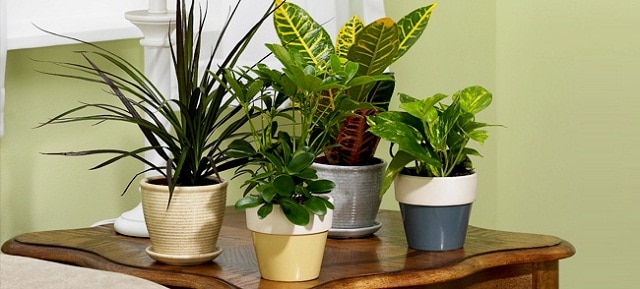Whether you want to make an indoor garden or you already have one– Check out some of the best & most essential indoor gardening tips for help!
If you recently moved to a big city to get closer to your job or you still want to carry on farming in the dead of winter, do not fret; indoor gardening is a viable option for you. Aside from reaping a bounty harvest of your favorite vegetables, indoor gardening is suitable for growing seedlings for transplanting into a farm or continuing growth after transplanting.
Indoor plants do not require a lot of space and can survive in room corners, window sills or balconies, and they grow in containers in a process called potting. Plants emanate oxygen which in turn cleanses the air in your apartment. People who reside in industrial cities that experience constant smog rely on air conditioning to cleanse the air would appreciate a supply of natural fresh air in their apartments. Indoor plants such as a Bonsai tree provide aesthetic beauty to your home.
There are different species of Bonsai trees each thriving in various climatic conditions such as junipers, cedars, and pines. Bonsai trees need careful handling while styling the branches and therefore, you need to use an appropriate brush cutter to prune. For best results, seek expert advice on how to take the best care of a bonsai tree.
Also Read: Best Bonsai Plants
How do you get started?
There are some factors you need to consider before starting an indoor garden.
1. Available space
 Rent in cities does not come cheap, and most city residents opt for smaller size apartments to keep living costs low. While deciding on a suitable space for indoor plants, consider access to natural light and avoid high traffic areas such as corridors or entryways. You do not want to keep bumping into potted plants or having to go around the garden each time you access the fridge. Find a reasonable place that does not hamper your movement or cause accidents especially if you have younger ones running around.
Rent in cities does not come cheap, and most city residents opt for smaller size apartments to keep living costs low. While deciding on a suitable space for indoor plants, consider access to natural light and avoid high traffic areas such as corridors or entryways. You do not want to keep bumping into potted plants or having to go around the garden each time you access the fridge. Find a reasonable place that does not hamper your movement or cause accidents especially if you have younger ones running around.
Also Read: Windowsill Vegetable Garden
2. Growing Medium
Regular garden soil is not suitable for indoor gardening as it comes with weed and all kinds of insects found on a farm. Farmland holds the plants’ roots together and provides a myriad of nutrients that are necessary for plants to thrive. You can choose to prepare a growing medium or buy a premade one at your local garden store. Potted plants dry out faster than plants growing in the soil and hence the need for a regular watering routine. Overwatering plants leads to wilting in the stems while under watering causes leaves to drop prematurely among other effects.
Also Read: Indoor Garden Under Stairs
3. Organic nutrients
Since indoor plants do not grow in soil, you need to provide a natural boost of nutrients by applying organic fertilizer. Read the instructions on the bag to know how much fertilizer to use at a time and the frequency of application. If you are not keen on using fertilizer, you may choose to use Hydroponic nutrients or homemade compost instead.
4. Light
Just as nutrients are essential for the well-being of plants, so is light. Plants need light for photosynthesis which helps plants grow healthy foliage and bear fruits. Tall buildings near your apartment will obscure natural light from reaching your plants even if they are near a window. The winter season tends to be gloomy, and this means limited natural light. A grow light will solve this problem in one click of a switch. Ensure that your grow light has the same wavelength as the sun; it should not be too bright nor too dull.
Also Read: Best Tall Indoor Plants
5. Humidity
Lack of moisture may cause the plants to wither and lose their leaves. There are creative ways of providing enough moisture to indoor plants; try placing the plants together so they can get humidity from one another. Evaporation is an excellent source of moisture for plants. Putting a tray of water next to your plants has a similar humid effect to living near a massive water body like the sea or ocean. You can also place water next to the plants and if this does not work, invest in an environmental controller that shifts the levels of humidity as you wish.
Also Read: Best Indoor Herbs
6. Temperature
Temperatures vary from day and night and from one season to the next. Plants need correct temperatures to grow and mature. Cold temperatures may cause yellowing of leaves while hot temperatures may lead to stunted growth. Research on the right temperatures for the type of plants you want to grow in your indoor garden and adjust as required.
Also Read: Best Indoor Plants According to Different Light Conditions
7. Selecting plants
After considering the fundamental elements of indoor gardening, you can now choose the type of plants you want to grow. Since space is likely to be an issue for apartment dwellers, avoid plants that grow too big as they will eat into your living space. You do not want a jungle in your home! Conventional plants for indoor gardening include flowers, herbs, fruits, bonsai trees, and vegetables.
Also Read: How to Grow Lemon Tree in a Pot
Conclusion
Lack of land to garden should not thwart you from growing your favorite vegetables or fruit. Indoor gardening is possible in small quarters, and modern technology allows us to simulate environments that match those of a natural garden. This way, your indoor plants can have the same amount of the sunshine, water, and nutrients required to grow to maturity and harvest. Learning how to take the best care of Bonsai trees increases your chances of having these beauties grace your home.
Pin it!
Amelia Robinson is a lover of plants and gardens, as well as an educator on this topic. It’s her goal to make sure that you get the chance to learn what you need to about gardening to succeed with your own home garden at the blog RobinsonLovePlants.com. You’re not going to find just a collection of basic articles about gardening here. Instead, she want to answer the difficult questions for you











I am so grateful to have access to the minds and experience of other gardeners. Just recently, I adopted a beautiful ficus tree. When I picked it up, it had been living outside in the Colorado summer sun and it looked fantastic. However, the season has since changed and I brought the beauty inside. To my horror, it began shedding leaves at an alarming rate. I read that the ficus tree tends to do this with the change of season. I also noted that a watering schedule and a healthy light source is vital. I ran out and bought a grow light and have been monitoring the watering schedule, honing it to an approximate precision. The shedding of the leaves has since stopped but I’m curious as to the damage the shock from the move put on the tree and if you have any suggestions for future care. I’m an keeper of myriad houseplants. Although my thumb is quite green, it has only been fluent in the care of ‘plants’, not trees. I’ve been told by multiple individuals that plant care and tree care vary in many different ways. Could you please help me?
Thanks,
Stefanie Johnson
The best post.
Thanks for share this article.
I look forward to your new article.
Lighting is really a problem for my garden. Yes, grow light is a great idea. Love this article. Thanks…
May I ask for the demo of planting the plants under stairs indoor….. whether we can put mud under it or have keep pot…. confused….. please help me….if u help wit vedio vl b better… Thnk u
The article doesn’t mention that pests can be a challenge if you want to have an indoor garden as you cannot use most of outdoor pest control methods. But then again, you do not get as many pests. A small insect trap would do the trick I suppose